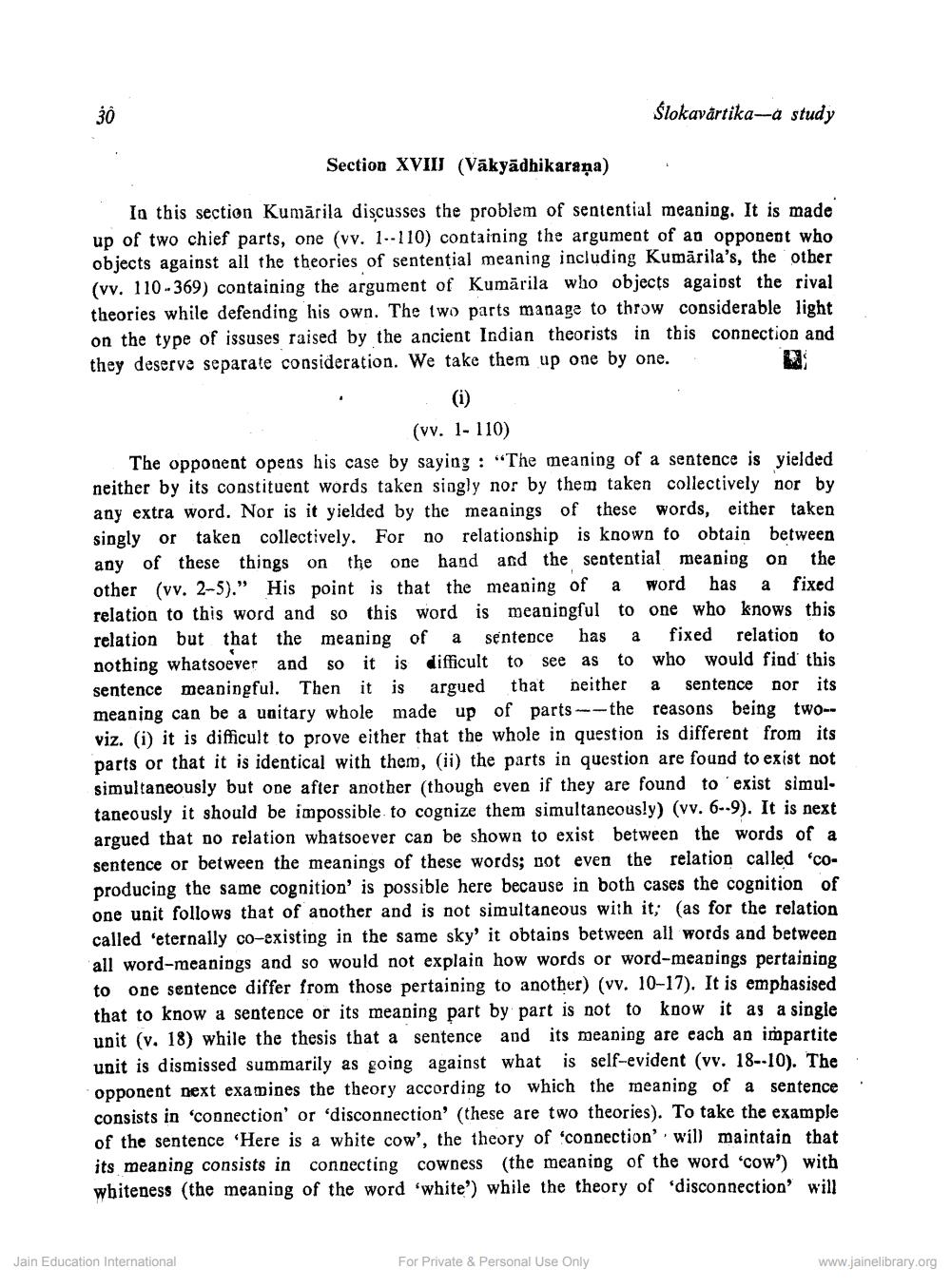________________
Ślokavårtika-a study
Section XVII (Vākyādhikaraña)
In this section Kumārila discusses the problem of sentential meaning. It is made up of two chief parts, one (vv. 1--110) containing the argument of an opponent who objects against all the theories of sentential meaning including Kumārila's, the other (vv. 110 - 369) containing the argument of Kumārila who objects agaiost the rival theories while defending his own. The two parts manage to throw considerable light on the type of issuses raised by the ancient Indian theorists in this connection and they deserve separate consideration. We take them up one by one.
(vv. 1- 110) The opponent opens his case by saying : "The meaning of a sentence is yielded neither by its constituent words taken singly nor by them taken collectively nor by any extra word. Nor is it yielded by the meanings of these words, either taken singly or taken collectively. For no relationship is known to obtain between any of these things on the one hand and the sentential meaning on the other (vv. 2-5).” His point is that the meaning of a word has a fixed relation to this word and so this word is meaningful to one who knows this relation but that the meaning of a sentence has a fixed relation to nothing whatsoever and so it is difficult to see as to who would find this sentence meaningful. Then it is argued that neither a sentence nor its meaning can be a unitary whole made up of parts--the reasons being twoviz. (i) it is difficult to prove either that the whole in question is different from its parts or that it is identical with them, (ii) the parts in question are found to exist not simultaneously but one after another (though even if they are found to exist simultaneously it should be impossible to cognize them simultaneously) (vv. 6-9). It is next argued that no relation whatsoever can be shown to exist between the words of a sentence or between the meanings of these words; not even the relation called 'coproducing the same cognition' is possible here because in both cases the cognition of one unit follows that of another and is not simultaneous with it; (as for the relation called 'eternally co-existing in the same sky' it obtains between all words and between all word-meanings and so would not explain how words or word-meanings pertaining to one sentence differ from those pertaining to another) (vv. 10-17). It is emphasised that to know a sentence or its meaning part by part is not to know it as a single unit (v. 18) while the thesis that a sentence and its meaning are each an impartite unit is dismissed summarily as going against what is self-evident (vv. 18--10). The opponent next examines the theory according to which the meaning of a sentence consists in connection' or 'disconnection' (these are two theories). To take the example of the sentence 'Here is a white cow', the theory of 'connection will maintain that its meaning consists in connecting cowness (the meaning of the word 'cow) with whiteness (the meaning of the word 'white') while the theory of 'disconnection will
Jain Education International
For Private & Personal Use Only
www.jainelibrary.org




